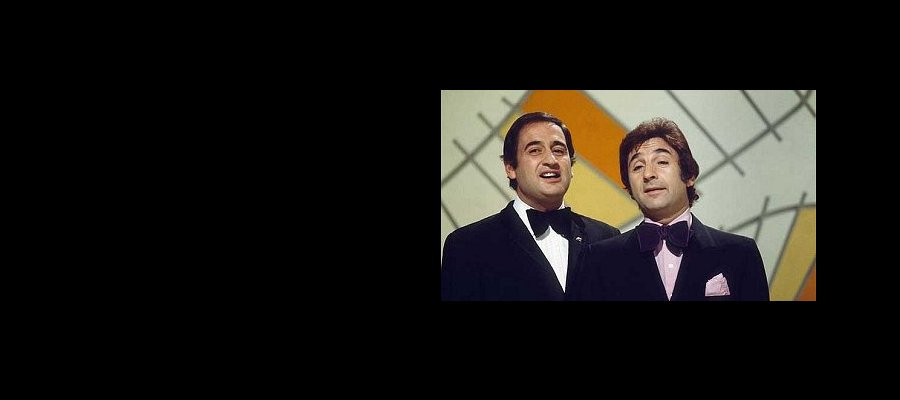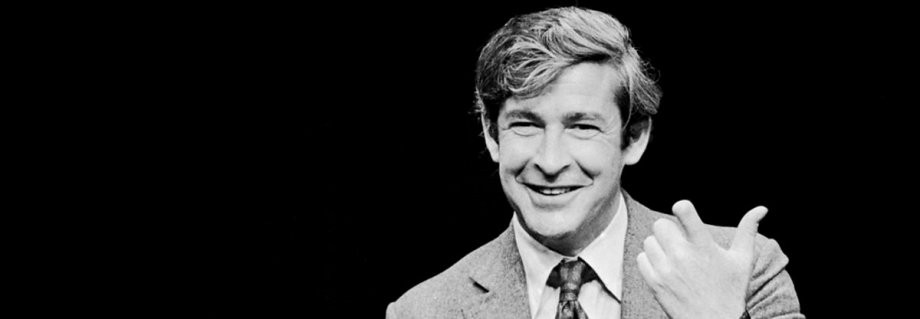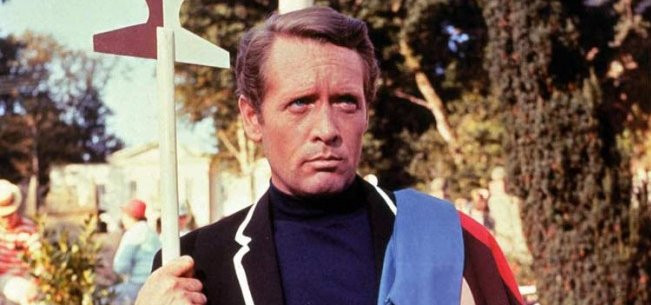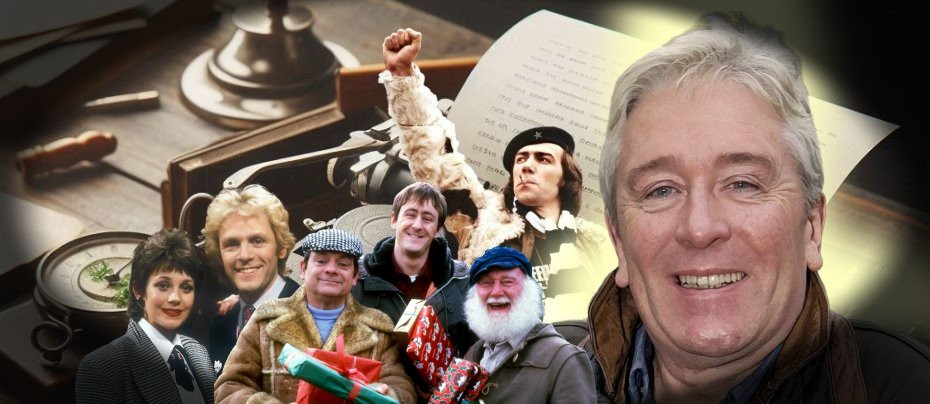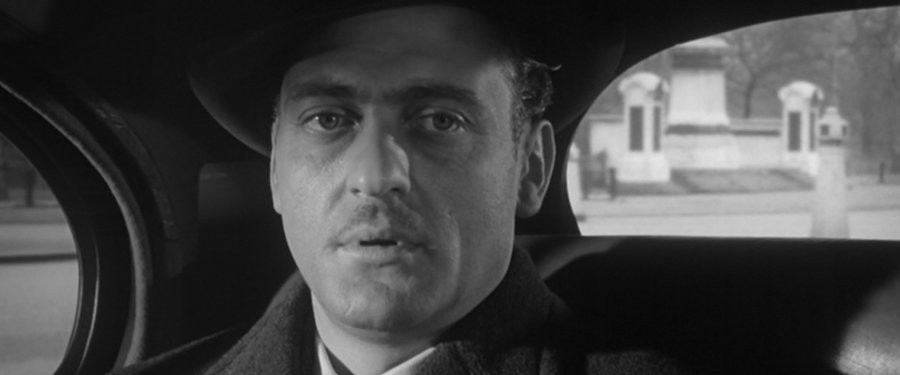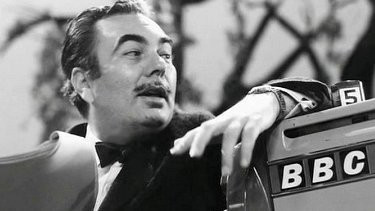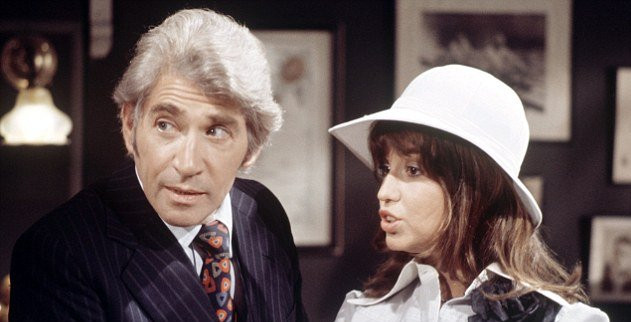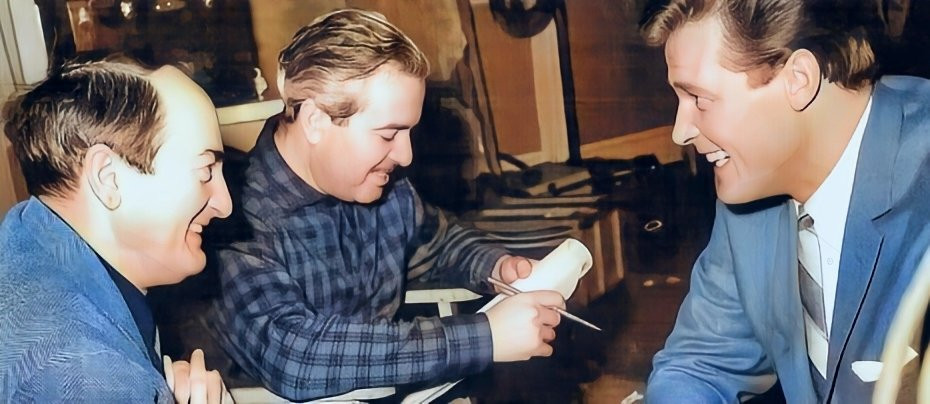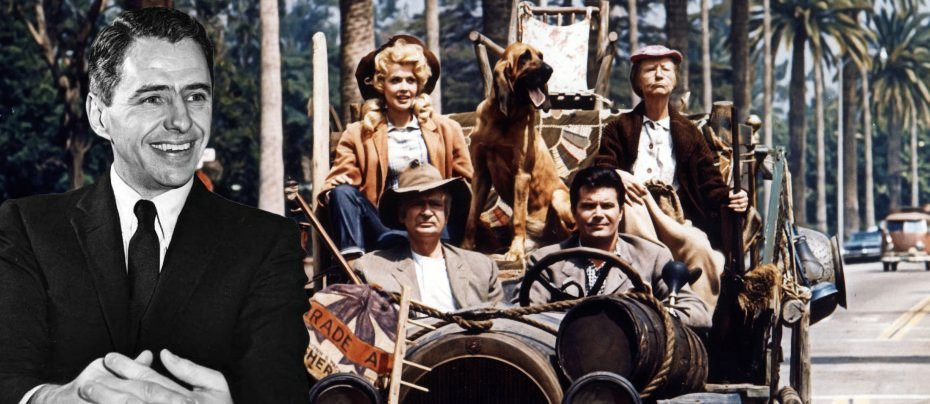
James Aubrey
James Aubrey biography by Michael Spadoni
James Aubrey was the man who paved the way for such notable decision makers such as Fred Silverman and Brandon Tartikoff. But Aubrey was in a class by himself. Unlike NBC’s Sylvester “Pat” Weaver, who tried to uplift tastes with various programmes (and in the process helped create the early morning news-entertainment program, the late-night variety show and the one-show “spectacular,” or “special”) Aubrey was single-minded in his pursuit of the largest possible audience. A rather ruthless man, Aubrey was an executive who lived hard and played just as hard. A combination of factors led to James Aubrey’s departure as president of the CBS television network after nearly six years. But while he was at the helm, CBS was the network to beat in the ratings, and his competition knew it.
Born James Thomas Aubrey Junior on December 14th, 1918 in LaSalle, Illinois, he graduated from Harvard University with a bachelor’s degree in 1941. Soon after, he became a test pilot for the U.S. Air Force during World War Two. (He reportedly taught actor Jimmy Stewart how to fly.) After the war, Aubrey started selling advertising for various magazines before moving to KNX, the CBS-owned Los Angeles radio station in 1948. He began selling time on the station, and soon after sold ad time on its sister television station KNXT. By 1952, he moved up to sales manager and then general manager of KNXT, where he did well enough to get a job at the CBS network, where he was named West Coast programmer. It was during that time that he co-wrote the outline for a new Western series, which later became Have Gun, Will Travel, a major success for the network that ran from 1957 through 1963.
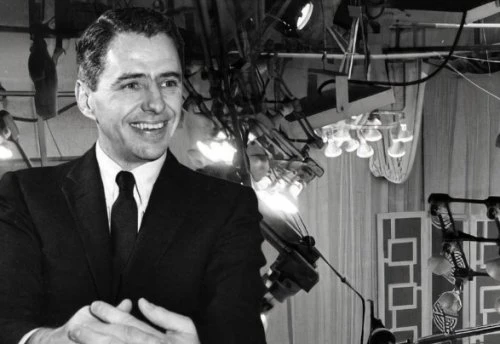
But Aubrey wanted to run an entire programming department. So in 1956, he accepted a job offer from ABC to become that network’s head programmer. At the time, ABC was a shadow of CBS and NBC, with relatively few hits and even fewer affiliates to broadcast them. Aubrey helped network president Oliver Treyz develop and purchase a number of series which would become major successes for ABC, including Maverick, The Real McCoys, The Donna Reed Show, The Rifleman, and 77 Sunset Strip.
By 1958, ABC’s ratings were on the rise, but Aubrey felt with Treyz at the helm, there was not much of a future for him at the third-ranked network. CBS watched from a distance and lured Aubrey back, first as an assistant to President Frank Stanton, then as executive vice-president of creative services. A year later, fate intervened once again.
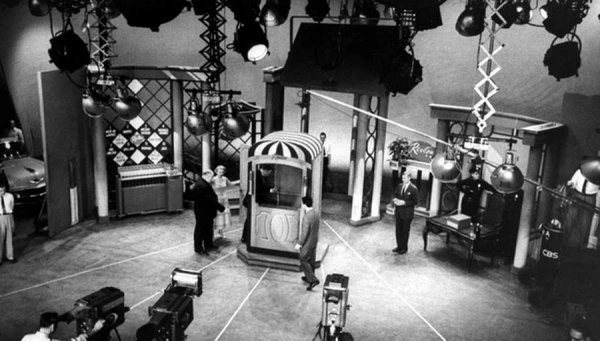
In late 1959, CBS was caught up in the middle of the "quiz show scandals", which revealed that some game shows were either rigged or heavily influenced by advertisers for a particular outcome. One of the shows in the middle of the controversy was The $64,000 Question, which was created by Louis G. Cowan–who became president of the CBS Television Network soon after the show became a smash. By late 1959, CBS Chairman Bill Paley and President Frank Stanton began to distance themselves from Cowan. Although he denied any wrongdoing in producing $64,000 Question, Cowan became too closely linked to the quiz show to continue at CBS. He resigned following a long illness. Aubrey became Cowan’s replacement in December 1959.
As 1960 began, CBS had divested itself of game shows in prime time; it remained tops in the ratings with such Westerns as Gunsmoke, Have Gun Will Travel, and Wanted: Dead or Alive. CBS also had hit situation comedies on its schedule, including The Danny Thomas Show, and the youth-oriented Dennis the Menace and Dobie Gillis, both of which appeared in the fall of 1959. But with ABC showing signs of becoming competitive with the other networks, Aubrey began looking at more youth-oriented series to counter the ABC charge.
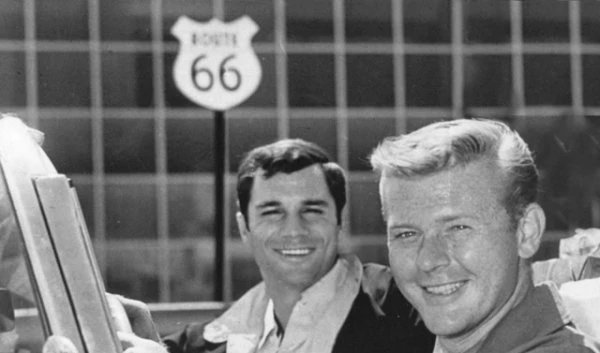
The occasional drama anthology Playhouse 90 was soon gone; series with young stars such as Checkmate and Route 66 started popping up on the schedule; and specials were kept to a minimum (he felt it would disrupt the viewing pattern).
Aubrey put much of his efforts into finding new situation comedy hits, believing they were the key to attracting younger, larger audiences. A February 1960 episode of Danny Thomas led to The Andy Griffith Show, one of the better efforts of his administration. By 1961, the much-hailed Dick Van Dyke Show and the legal drama The Defenders joined the CBS prime time lineup. So did a syndicated sitcom that Aubrey picked up–the talking horse saga Mr. Ed.
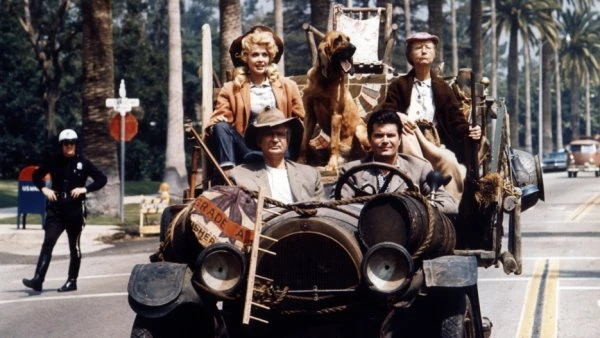
Aubrey’s sitcom efforts really clicked in the fall of 1962 with the debut of The Beverly Hillbillies. The saga of a backwoods family who strike oil and bring their rural lifestyle to upscale Southern California, “Hillbillies” became television’s top-rated series after just six weeks on the air. But critics couldn’t warm up to what was essentially farce; author David Halberstam described the show as “a series so demented and tasteless that it boggles the mind.” In a 1986 interview, Aubrey remembered how he overcame criticism within CBS to get Beverly Hillbillies on the air.
“I'd become convinced `Beverly Hillbillies' was going to work. (CBS founder and chairman) Bill Paley wasn't convinced. Bill has this great sense of propriety. Putting aside the Sarnoffs and all the other great names of broadcasting, Paley stood-stands-head and shoulders above everyone else. He had this blasting genius of instinctively looking at a show and knowing if it should be on the air. He could also be ruthless and distant. . . But Bill was intuitive about both the business and creative sides of TV. And he genuinely disliked `Beverly Hillbillies.' I put it on the schedule anyway.”
The success of Beverly Hillbillies, along with Lucille Ball’s return to series television (The Lucy Show) and veterans Danny Thomas, Andy Griffith, and Jack Benny pushed CBS’ numbers even higher. Not only did CBS’ 1962-63 prime time lineup crush NBC and ABC, it earned the highest seasonal ratings of any network ever. The 1963-64 lineup did even better: CBS had 14 of the 15 highest-rated series in prime time (only NBC’s family Western Bonanza prevented a total CBS sweep). CBS also had every one of the top ten programs in daytime, led by the venerable drama As the World Turns. But CBS still played second-fiddle to NBC in evening news; the Peacock Network easily beat Walter Cronkite with The Huntley-Brinkley Report. Late night was also NBC’s domain, thanks to Johnny Carson’s Tonight Show. No matter: CBS was on a roll.
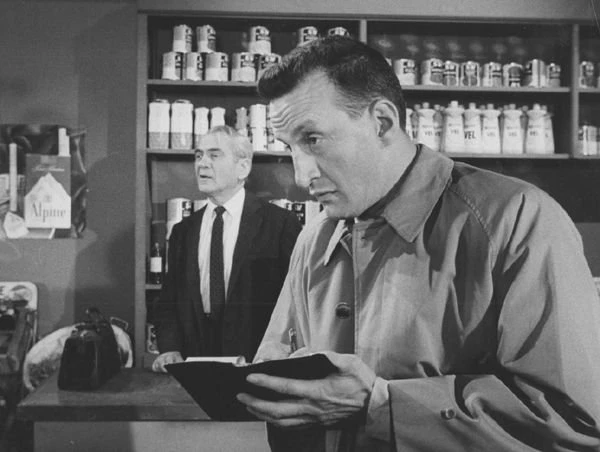
Aubrey’s formula for entertainment was simple: laughs, adventure, and attractive actors; his policy was spelled out in a message to the producers of Route 66, which featured two drifters who drove their Corvette across the country, solving the problems of those they met along the way. Aubrey reportedly told the Route 66 producers to add more “broads, bosoms and fun” in an effort to lighten the show. It became known as the “Aubrey Dictum;” he later denied ever using the phrase during a Senate hearing on sex and violence on television. Critics denounced both Aubrey’s philosophy and many of the shows on the CBS schedule, but it didn’t matter. Higher ratings translated into higher ad revenues and rising stock prices, making Aubrey the darling of Wall Street. (Any misgivings Bill Paley had about Aubrey were soothed every time Paley looked at the growing worth of his CBS stock.) One of the few exceptions to the “Aubrey Dictum” was the well-done but short-lived 1963 drama East Side, West Side, which dealt with a New York City social worker played by George C. Scott. (Cicely Tyson was his secretary, making her the first African-American to appear regularly on a network television series.)
Despite good intentions, “East Side” lasted only one season. The failure was probably not Aubrey’s fault, but it was one of CBS’ few “quality” dramas produced during his tenure. The other networks were reeling. So dominant was CBS that programmers at NBC and ABC allowed CBS to introduce its fall schedule first before they announced their own lineups. In short, Aubrey was setting the schedules for all three television networks.
As Aubrey’s success grew, so did his ego. He worked long hours six days a week, reading scripts and even ordering scenes to be reshot. He became abrasive with the people who worked for him. Worse, Aubrey started to get nasty with CBS’ roster of stars. When long-time CBS headliner Jack Benny complained about having the rural fluff comedy Petticoat Junction as his lead-in, Aubrey cancelled Benny’s weekly series despite top-20 ratings. (Paley did not intervene on behalf of Benny, whom he hired in 1948 in a successful move to increase CBS’ radio audience. Benny jumped to NBC, but his long-running comedy lasted just one more season.)
Lucille Ball refused to deal with Aubrey, whom she called “that S.O.B.”; she negotiated with Paley instead. Producer and actor John Houseman (who later won an Academy Award for his portrayal of a crusty law professor in the 1973 film The Paper Chase) resigned from a proposed CBS American history series called The Great Adventure because of what he considered Aubrey’s interference in the creative process. Houseman later dubbed Aubrey “The Smiling Cobra”–a nickname that stuck in the industry.
Away from the CBS executive suites, rumours followed Aubrey. Following his 1963 divorce from actress Phyllis Thaxter, he began dating a string of well-known (and not so well-known) women; there were allegations of rather bizarre sexual behaviour. Those rumours made it into the gossip rags.
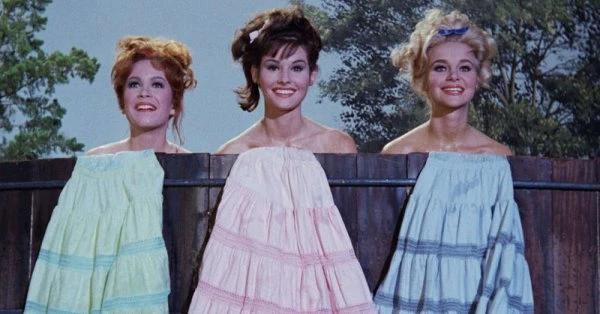
In 1964, a celebrity scandal sheet claimed Aubrey accepted kickbacks from producers; an internal CBS investigation found that Aubrey–who was making nearly $300,000 a year–had his car and apartment paid for by Filmways Studios, which produced Mr. Ed; The Beverly Hillbillies and Petticoat Junction. But his relationship with former comic turned television producer Keefe Brasselle may have been the final straw.
Brasselle had little luck as an actor or a comedian, and never produced a television series in his life. But for the fall of 1964, Aubrey bought three new shows from Brasselle’s production company and placed them on the CBS prime time schedule–a pair of situation comedies called The Baileys of Balboa and The Cara Williams Show, and a newspaper drama called The Reporter. Feeling invincible, Aubrey also shifted time slots for several key hits, including the top-rated Beverly Hillbillies, hoping to increase CBS’ prime time dominance.
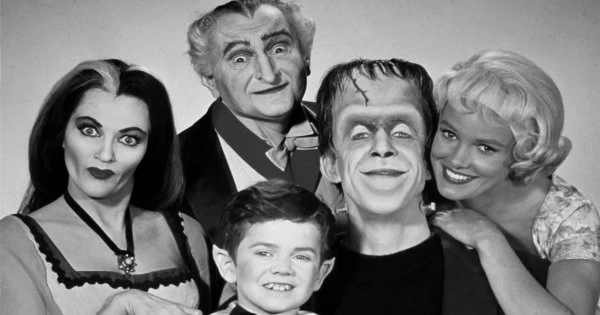
The results were a disaster. ABC surprised the industry and ran away with the number one slot at the start of the 1964-65 season, thanks to such new hits as Bewitched and Peyton Place. CBS fell to second place. The Brasselle-produced series went over budget, were scorned by critics and landed at the bottom of the ratings. “Hillbillies” fell out of the top ten in its new time period. And other highly-touted new CBS series, such as The Entertainers, Many Happy Returns and My Living Doll were flops. Only freshmen series Gomer Pyle, USMC, The Munsters and Gilligan’s Island stuck to the wall for Aubrey. By the end of 1964, CBS regained the lead–by a very slight margin–but for the first time in several years, a CBS series was not the most-watched series in prime time. That honour went to NBC’s resilient Bonanza.
In January 1965, Aubrey decided to make some mid-course corrections by adding a few new shows and shuffling the time slots of others. He yanked the Brasselle-produced The Reporters from the schedule, replacing it with the news programme CBS Reports. (Aubrey stripped the show of all commercials, knowing the A.C. Nielsen rating service did not count unsponsored programmes.) Ratings improved a bit after the changes, but CBS no longer dominated prime time the way it had from 1962 to 1964.
Aubrey’s arrogance also reached the top floors of CBS’ “Black Rock” skyscraper in New York City. In late 1964, Aubrey reportedly approached company President Frank Stanton and proposed a secret takeover of CBS; the investors would remove Bill Paley from the chairman’s post and Stanton would replace him. Stanton told Paley about the offer, and both men agreed Aubrey could no longer be trusted to run the company. Between the Machiavellian manoeuvres, falling ratings and rumours in his personal life, Paley finally lost his patience with the man he had hoped would eventually succeed him. He told Stanton to fire Aubrey–immediately. The deed was done on February 27th, 1965. As “The New York Times Magazine” reported,
“Aubrey was torpedoed at last by a combination of his imperiousness, the ratings drop, and a vivid after-hours life culminating in a raucous Miami Beach party–details of which no one ever agrees on–the weekend he was fired."
CBS’ statement was brief: “Jim Aubrey's outstanding accomplishment during his tenure as head of the...television network need no elaboration. His extraordinary record speaks for itself.” Aubrey’s response was in character: “I don’t pretend to be any saint. If anyone wants to indict me for liking pretty girls, I’m guilty.”
Certainly several fiction authors took him at his word. Jacqueline Susann patterned her sex-obsessed network executive character Robin Stone after Aubrey in her best-seller “The Love Machine”. Merle Norman wrote his book “Only You, Dick Darling!” based on his experience trying to sell a television series to Aubrey and CBS. And even failed producer Keefe Brasselle had his say with a novel about the television industry called “The CanniBalS” (the emphasis on the C, B and S in the title was no accident).
Aubrey left CBS with a parachute of more than $2 million dollars; he set up a production company and came close to running the ABC network when billionaire Howard Hughes tried to buy the company. But the reclusive Hughes refused to appear before the Federal Communications Commission for a broadcast license, killing the deal.

In 1969, Aubrey was tapped to revive the once-dominant MGM studios. He cut MGM’s payroll from six thousand people to just 12 hundred; sold off the studio’s costumes and props; and made a deal to sell MGM’s Culver City, California back lot to developers. Aubrey also shifted production of films to relatively inexpensive features that could turn a profit. Unfortunately, producers and directors battled with Aubrey over script changes and final cuts of produced films, making him one of Hollywood’s most-hated executives. But he did cut MGM’s debt before resigning in 1973. Aubrey returned to production, specializing in made-for-television films. His best-known movie was The Dallas Cowboy Cheerleaders, a 1979 television flick that was panned by critics but was a huge ratings hit for ABC.
His dictum of “broads, bosoms and fun” proved to be timeless. James T. Aubrey died of a heart attack on September 3rd, 1994. By then, he was a nearly forgotten figure in the television industry. But those who faced “The Smiling Cobra” would never forget him.
Published on June 28th, 2022. Written by Michael Spadoni for Television Heaven.


